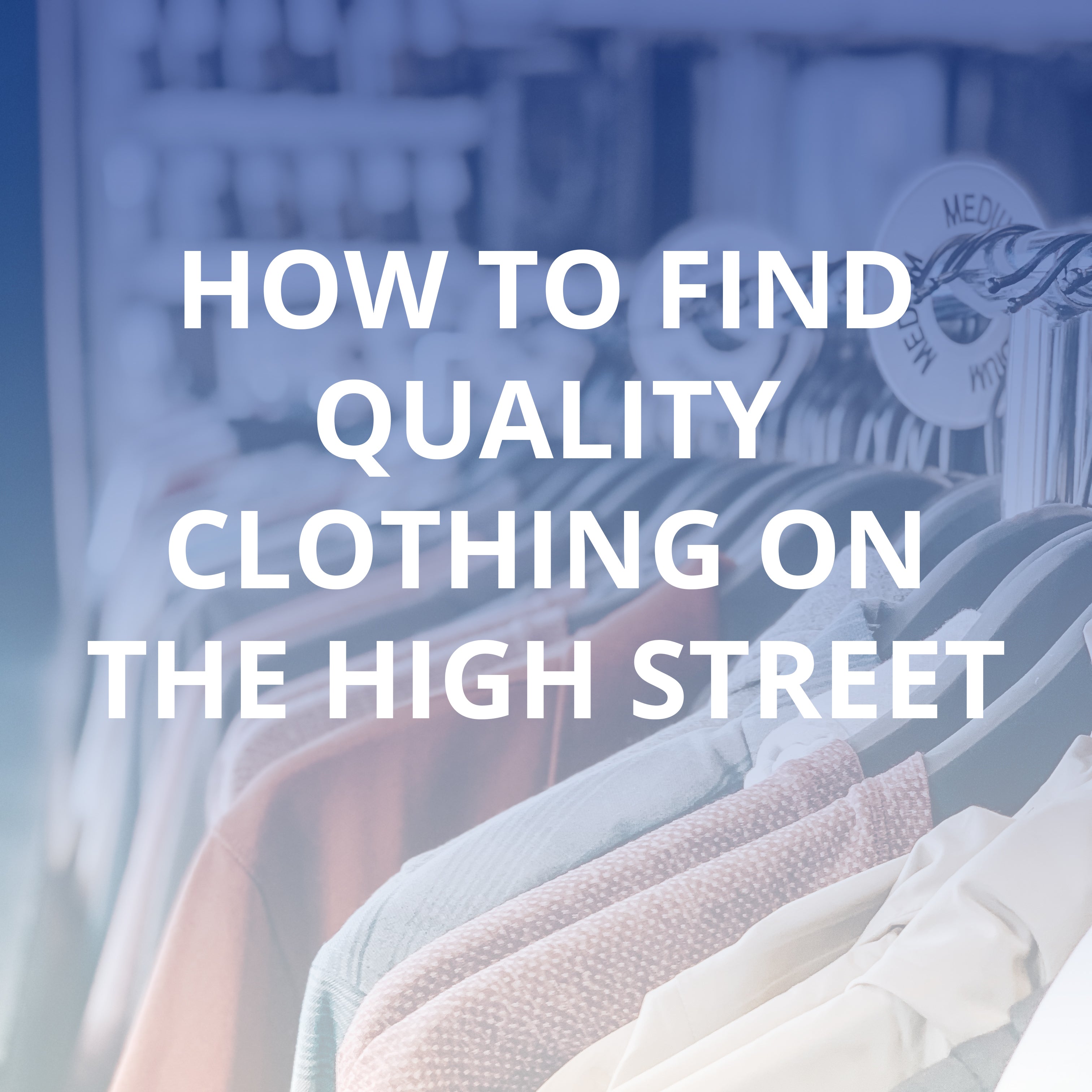As self-confessed sewing nerds, we know a thing or two about quality stitching! When shopping for clothes from high street brands, it can be difficult to know if the item you’re purchasing will be a good investment or if it will fall apart after a few weeks. Fast fashion is synonymous with poor quality manufacturing, but these checks should help you to find the best quality items. Some of the tips listed in this quick guide to high street clothing may seem obvious, but they’re a great way to ensure your chosen items will offer good long-term value!

The materials
One of the first things you might notice about a piece of clothing is the quality of the fabric! Lots of cheaply made garments are constructed from man-made materials which generally aren’t breathable and can irritate sensitive skin. Seeing synthetics like polyester, acrylic, or nylon on the label generally suggests that the garment isn’t the highest quality, unless it is an activewear item where such materials are necessary! There are a couple of quick checks you can carry out to assess the quality of the fabric:
- Check the label to see what the item is made from. Where possible, select items made entirely or partly from natural fabrics. High-quality materials such as cotton and wool are usually a good choice.
- Test the thickness of the fabric by either holding it up to the light or holding a hand behind it to judge the opacity. Unless the item is designed for layering, thin fabric suggests poor quality! Sheer material is more prone to tearing and therefore items made from it aren’t likely to last very long.
- Gently stretch a small area of the fabric between your hands to check if it holds its shape after stretching. If it becomes misshapen and doesn’t spring back, it’s likely to not stand up well to daily wear.
- Check the label for care instructions for special requirements such as hand wash only, dry clean only, or do not tumble dry. If these are not convenient options for you, you may wish to reconsider before purchase. It is important to follow these guidelines to keep your clothing in good shape for as long as possible.
- Be aware that certain fabrics require more input to keep them looking their best. Linen, for example, is a popular choice for clothing because it is strong and biodegradable but creases very easily and will require ironing to keep its shape.
- Check that accessories like buttons and zips are of a decent quality, are attached securely, and can be done up and undone easily without getting stuck or breaking.

The construction
Anyone who has ever purchased an item of clothing only for it to fall apart at the seams soon after knows how important stitch quality is! When shopping for new items the stitch quality of the garment is as important as more obvious factors like the design, material, and decorative details. No matter where you are shopping, ensuring that the stitches are of the highest possible quality is one of the best ways to ensure you are buying a garment which won’t fall apart on the first wear! You can get a good idea of the quality of stitching and avoid poorly constructed garments by checking the following:
- Look at both the outside and inside of the seams. One thing to check for is the stitches per inch (SPI). A high SPI seam with short stitches indicates a greater stitch density and a higher quality of stitching. Seams with a low SPI are generally of inferior quality and will be made up of long stitches which are more prone to snagging or coming apart completely.
- Check the stitch consistency to see how regular each row of stitches is. This is important not only for the structural integrity of a garment, but also for its appearance. Consistency is a highly valued quality because irregularities can cause weak points in seams.
- Examine the item for imperfections such as holes, missed stitches, loose stitches, crooked seams, snags, etc. which are all signs of poor workmanship and can be easy to miss at first glance.
- Check for misshapen or unravelling seams, which indicate an incorrect thread tension. Too much tension can cause seam puckering and uneven stitches. Too little tension is indicated by loose, uneven stitches and excessive looping. Each of these are a result of poor-quality sewing and can cause the garment to hang incorrectly and come apart.
- Gently pull the fabric either side of a seam to see if any gaps appear. If they do, it suggests that the stitches are irregular and unlikely to hold up to daily wear and tear.
- Check for loose ends! Loose threads are common on fast fashion garments and can cause entire seams to unravel if left unnoticed.
- Hold up the sleeves/legs next to one another, you might find they aren't the same width and have been cut poorly!

How to avoid these inconsistencies in your own sewing!
There are many ways that modern sewing machines can help you to avoid seam problems like this and produce a professional quality finish every time! Features such as automatic thread trimming and backtack, for example, can help to prevent loose threads at the end of your seams. For more information about industrial sewing machine solutions tailored to you and your process you can contact our team directly via info@ae-sewingmachines.co.uk and we’ll be happy to help!
